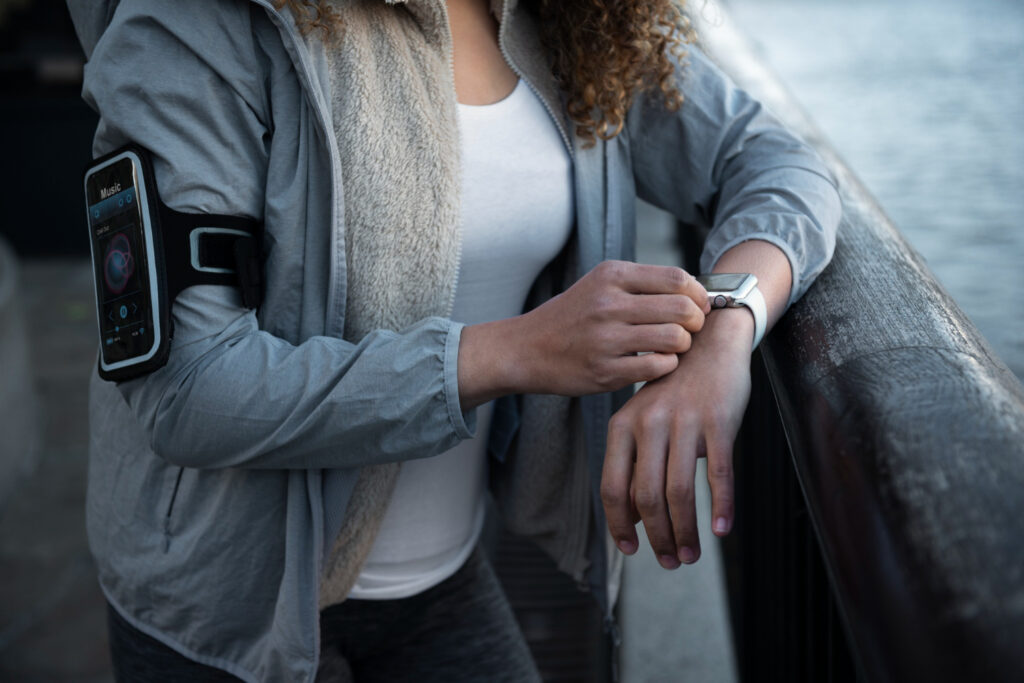
Step counters and basic fitness bands were once the pinnacle of wearable tech in sports. But in today’s high-performance world, that’s just the beginning. A new generation of smart wearables is pushing the boundaries of athletic training, delivering real-time physiological insights that once required lab testing or invasive procedures. For modern athletes, it’s no longer about just getting active — it’s about getting smarter.
Wearables today can track heart rate variability (HRV), oxygen saturation (SpO₂), muscle activation, core body temperature, and even dehydration levels. These data points offer a window into an athlete’s internal state, helping coaches and trainers tailor regimens with far more precision. Instead of training harder, the focus has shifted to training smarter, optimizing recovery times, identifying early signs of overtraining, and making in-the-moment decisions about exertion.
One of the most transformative metrics now widely available is HRV. Once reserved for elite sports scientists, HRV helps gauge how well an athlete’s nervous system is recovering between sessions. A drop in HRV can signal poor sleep, high stress, or the early onset of illness, triggering rest or adjustment before a breakdown occurs. It’s not just about performance; it’s about prevention.
Muscle activation sensors, another rising star in wearable tech, go beyond surface-level metrics. Using electromyography (EMG) patches or embedded sensors, athletes can now see which muscles are firing — and when. This allows for fine-tuning of biomechanics, correction of imbalances, and improved technique. It’s the kind of insight that helps elite sprinters shave hundredths off their time or keeps pitchers healthy through a long season.
Dehydration tracking has also entered the picture, with wearables using sweat analysis or skin conductivity to flag when hydration dips below safe thresholds. In endurance sports, where just 2% dehydration can impact performance, this kind of alert can mean the difference between a podium finish and a collapse.
All of this data is being funneled into increasingly user-friendly dashboards that give athletes and coaches actionable insights in real time. For professional teams, that means live decision-making during games and practices. For solo athletes, it brings the benefit of a virtual performance lab right to their wrist, chest strap, or training shoe.
Even more intriguing is how this technology is becoming accessible to everyday users. While elite athletes may have led the charge, many consumer wearables now offer advanced metrics that mirror pro-level tools. As AI continues to evolve, these platforms are starting to deliver not just data, but context. Think: “Your oxygen saturation dropped after 20 minutes at pace, consider slowing your tempo next session,” or “Muscle fatigue in your left quad is trending up, time to balance your next leg workout.”
Ultimately, wearables aren’t just enhancing athletic training — they’re redefining it. With each sensor and software upgrade, they’re moving the needle from guesswork to precision science. In a world where milliseconds and muscle fibers matter, that shift is nothing short of game-changing.

Lorem ipsum dolor sit amet, consectetur adipiscing elit. Ut elit tellus, luctus nec ullamcorper mattis, pulvinar dapibus leo.
Lorem ipsum dolor sit amet, consectetur adipiscing elit. Ut elit tellus, luctus nec ullamcorper mattis, pulvinar dapibus leo.